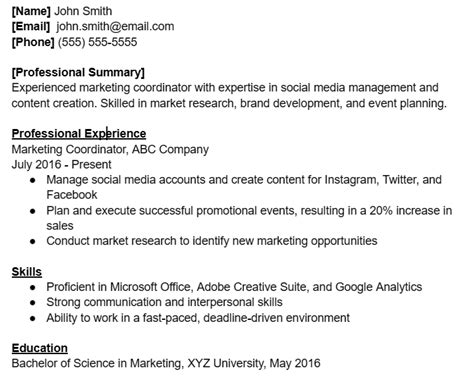In today’s competitive job market, presenting a compelling and comprehensive resume is crucial. A two-page resume offers ample space to showcase your skills, experience, and accomplishments, increasing your chances of making a lasting impression on potential employers. This detailed guide will provide you with a step-by-step approach to crafting an effective two-page resume that will set you apart from the competition.

- Increased space for detailed information: Provides room for showcasing your skills, experience, projects, and awards in greater depth.
- Enhanced narrative storytelling: Allows you to present a more cohesive and compelling professional narrative that highlights your career journey and growth.
- Emphasized accomplishments and impact: Provides sufficient space to quantify your accomplishments and demonstrate the impact you have made on organizations and projects.
- Improved readability: A well-formatted two-page resume ensures easy reading and navigation for recruiters and hiring managers.
Page 1
- Header: Name, contact information, and professional title
- Professional Summary: A concise overview of your skills, experience, and career goals
- Skills Section: Lists your technical and soft skills, highlighting those relevant to the target job
- Experience Section: Outlines your previous work experience in reverse chronological order, emphasizing responsibilities, accomplishments, and impact
- Education Section: Lists your academic qualifications, including degrees, institutions, and graduation dates
Page 2
- Additional Experience Section: Optional section for including experience that does not fit on page 1 (e.g., internships, part-time roles)
- Projects Section: Highlights significant projects you have completed, demonstrating your technical expertise and problem-solving abilities
- Certifications Section: Lists relevant certifications and licenses
- Awards and Recognition Section: Includes awards, honors, and accolades received in your professional or academic life
- Additional Sections: May include additional sections as needed (e.g., Publications, Volunteer Experience, Languages)
- Use a professional template: Choose a resume template that is clean, easy to read, and visually appealing.
- Quantify your accomplishments: Use specific numbers and data points to measure and demonstrate your impact.
- Highlight relevant keywords: Research common keywords used in job descriptions and incorporate them into your resume.
- Proofread carefully: Ensure your resume is free from errors in grammar, spelling, and formatting.
- Tailor your resume to each application: Customize your resume to the specific job description and company you are applying to.
- Overcrowding: Avoid cluttering your resume with too much information. Ensure proper spacing and white space to enhance readability.
- Lack of focus: Maintain a consistent focus on your target job and highlight skills and experience that are relevant to the role.
- Formatting errors: Adhere to a consistent resume format and layout throughout.
- Irrelevant information: Exclude personal or irrelevant information that has no impact on your professional profile.
- Typos: Proofread your resume thoroughly to eliminate typos and errors that may detract from your credibility.
- When is it appropriate to use a two-page resume?
– When your experience, skills, and accomplishments cannot be effectively summarized on one page. - How do I determine whether a two-page resume is necessary?
– Consider the industry, the seniority of the position, and the extent of your professional experience. - Should I use different font sizes for different sections?
– Yes, varying font sizes can help differentiate sections and draw attention to important information. - How do I manage references on a two-page resume?
– Include a statement at the bottom of the second page stating that references are available upon request. - What is a creative way to generate ideas for new resume applications?
– Use a “resumestart” or “resumebrainstormer” to generate unique and innovative ideas. - What are some statistics that highlight the importance of a strong resume?
– According to LinkedIn, a well-written resume can increase your chances of receiving a callback by 60%. - How long should a professional summary on a two-page resume be?
– Aim for a concise summary of approximately 100-150 words. - Should I include a head-shot photo on my resume?
– Including a professional head-shot photo can enhance your personal branding and make your resume stand out.
Crafting an effective two-page resume requires careful planning and attention to detail. By following the guidelines and tips provided in this guide, you can create a comprehensive and compelling document that will showcase your skills, experience, and accomplishments. Remember to tailor your resume to each job application, emphasize relevant keywords, and proofread carefully to ensure a polished and error-free presentation. A two-page resume is an opportunity to present a detailed and impactful narrative that will increase your chances of securing your dream job.
